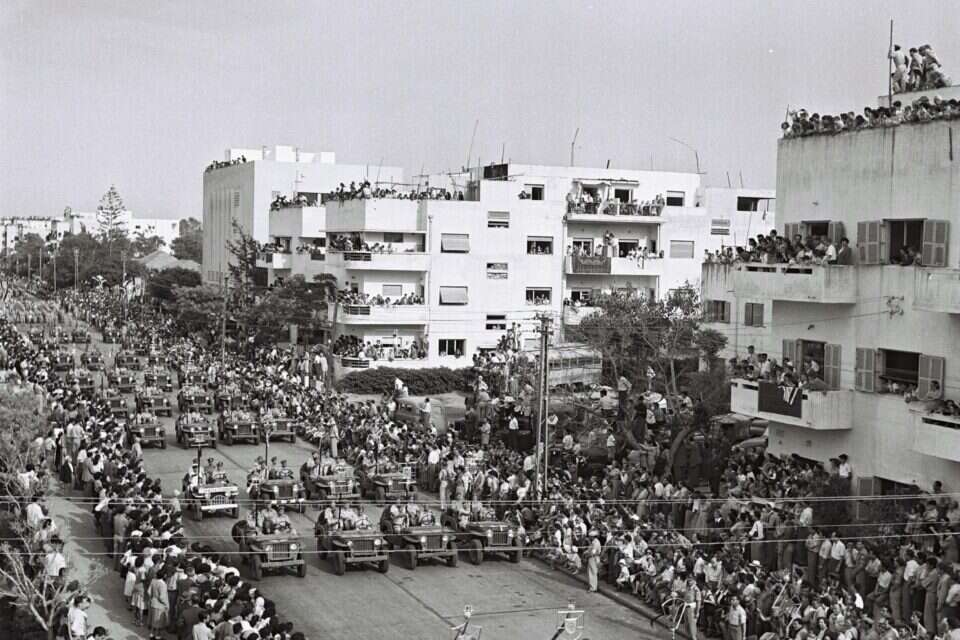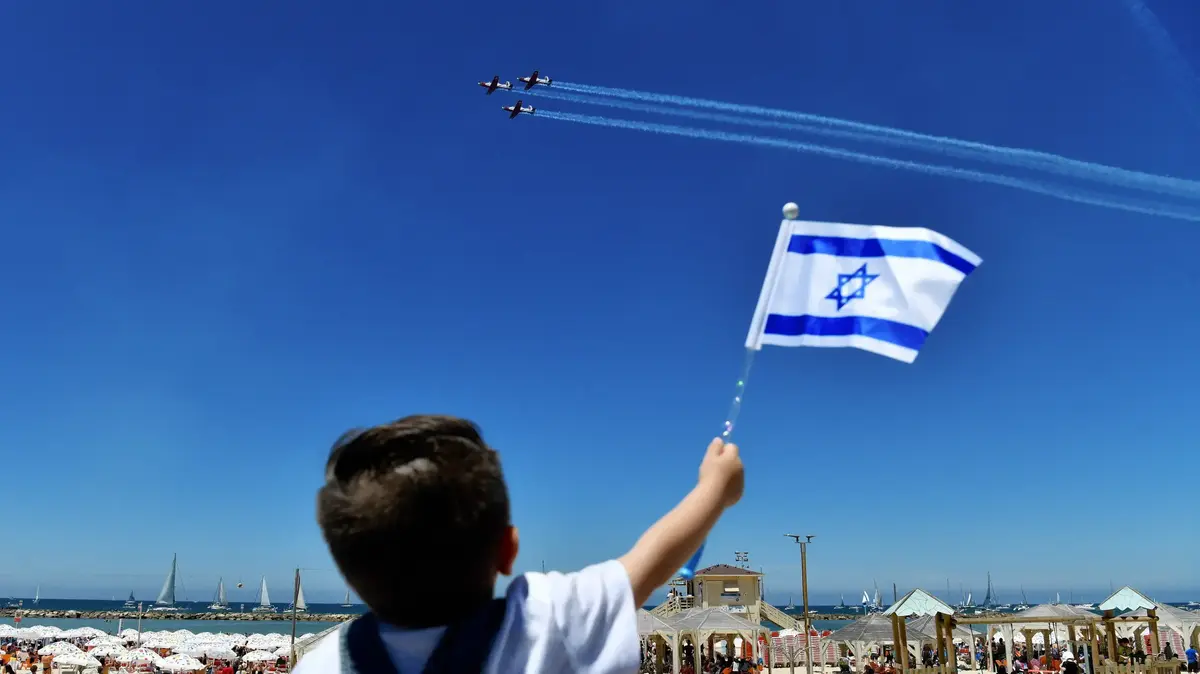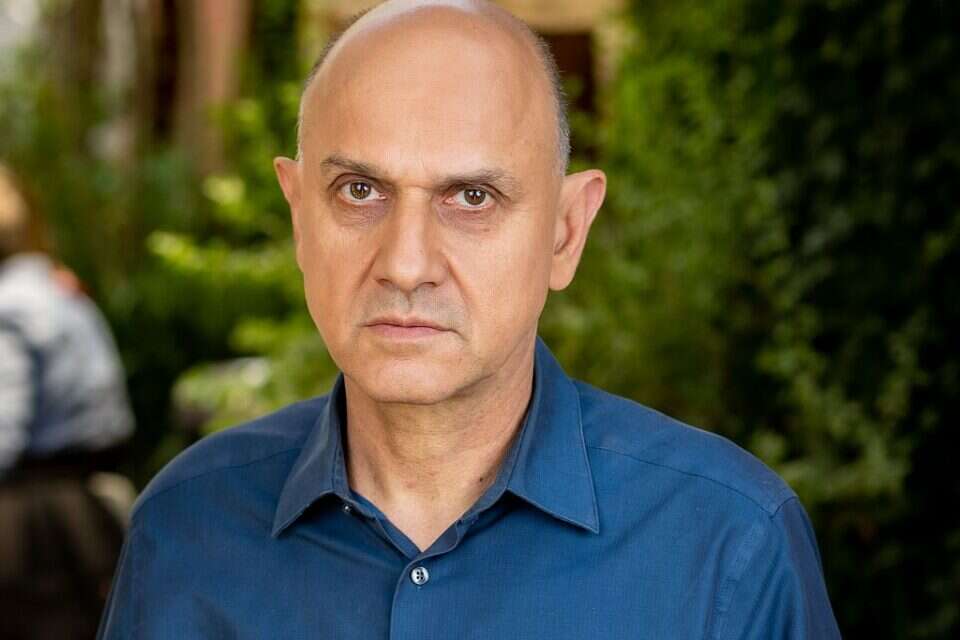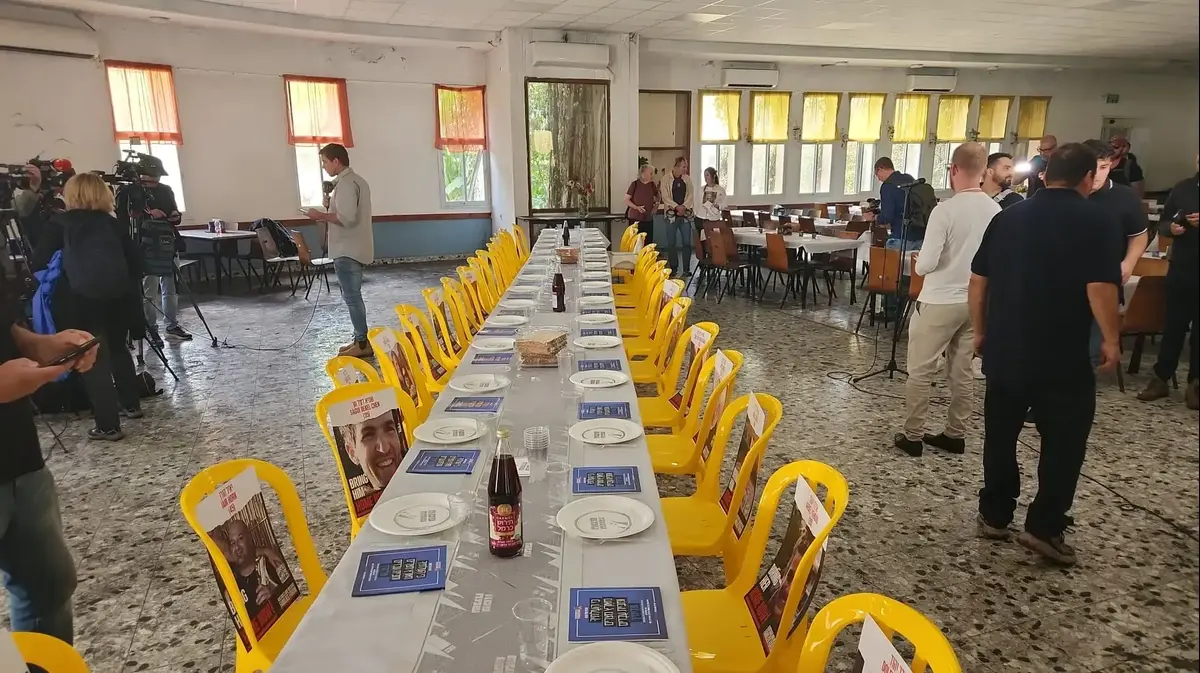Israel celebrates four!
On April 30, 1952, at four in the afternoon, an IDF parade began in honor of the fourth Independence Day of the State of Israel.
The parade passed through the streets of Arlozorov, Ben Yehuda and Allenby, to the Moshavot Square.
The footpaths marched along its route, followed by armored columns, and above it the Air Force flew to the applause of the crowds.
At the same time, seven other, smaller military parades set out in Be'er Sheva, Rehovot, Ramla, Lod, Hadera, Haifa and Tiberias, in front of hundreds of thousands of excited spectators.
There was no military parade in Jerusalem that year, after the parades had taken place in the capital in the previous two years.
The day before, on the eve of Independence Day, Independence Day ceremonies were held all over the country, after which the masses danced in the streets until the wee hours of the night.
The next day many had picnics in the woods and by the sea.
On the fourth Independence Day itself, at nine in the morning, a solemn prayer was held at the Yeshurun Synagogue in Jerusalem, in the presence of the Chief Rabbis, the Prime Minister, ministers and Knesset members, in an event broadcast on Kol Yisrael.
Two hours later, the Jerusalem District Commissioner, Dr. Avraham Bergman-Biran (later a well-known archaeologist), hosted a reception for the foreign consuls, who came to greet young Israel on a holiday. Who won a raffle at a dinner in the presence of the Prime Minister, David Ben-Gurion, and his ministers.
At three o'clock in the afternoon, crowds gathered at the national stadium in Ramat Gan, to watch the final game of the Independence Cup in football, which was held between the Jerusalem team and the Petah Tikva team, and which ended in a 0: 2 result in favor of Petah Tikva.
Independence Day ended with a glorious ball held at the King David Hotel in Jerusalem, to which Ben-Gurion invited members of the diplomatic staff stationed in Israel, along with many dignitaries and journalists.
•
This week 70 years ago: for all the columns
Poster of the Haggadah of Independence, 1952, Photo: General Staff / ACA Publishing - Information Branch
Why was the "Independence Haggadah" produced by the IDF destroyed?
In 1952, four years after the establishment of the state, the IDF Information Department decided to produce a special Haggadah for Independence Day, which would be based on the traditional Passover Haggadah but would include a text that would adapt to modern times and the fact that Israel is a free and independent state.
After the idea was approved at the highest levels in the army, the relevant elements in the IDF approached the production of the special Haggadah, with the intention that the soldiers would read it during the Independence Day dinner in the various IDF camps around the country.
According to the plan, even soldiers who go on Independence Day vacation, and therefore do not stay at the bases, will receive the Haggadah as a gift - and will use it for holiday meals at home, alongside their families.
To carry out the task of composing the Haggadah, the IDF Information Department hired the services of the writer Aharon Meged, who completed the work within about a month.
After reviewing the produce, all the military officials praised it, and the Haggadah was sent for printing no less than 10,000 copies, which were to be distributed to soldiers ahead of time.
However, about a week before Independence Day 1952, several copies of the new Haggadah reached the military rabbinate, and these, accompanied by ultra-Orthodox elements, caused a commotion by God - literally.
They claimed that this was an "act of blasphemy", since "in this Haggadah it is written that the army protects us and not the Blessed One."
The country was in turmoil until the prime minister, David Ben-Gurion, ordered the destruction of all copies of the Haggadah - and they were set on fire the day before Independence Day.
Over the years, more attempts have been made in Israel to promote the use of Independence Day Haggadahs.
In 1968 (1958), for example, the educator Dr. Israel Zvi Kinner (the father of the radio broadcaster Dan Kenner) wrote an Haggadah for Independence Day that resembled the Passover Haggadah.
Thus, for example, the piyyut "One who knows?"
Fiddler added the words "One is the Israel Defense Forces."
He changed the passage "and she who stood" to "and he who stood for our fathers and us, that more than once the Arabs arose for our brides - and the Blessed One and the IDF saved us from them."
•
For all the articles, columns and sections of Shishvat magazine
Independence Race Poster, 1952,
Crowds in the Independence Day race
On the morning of the fourth Independence Day, at 8:30, the "Independence Race" - the third since the establishment of the state - began.
The race, which in those days was one of the main events of the national holiday, attracted a lot of attention among sports enthusiasts, due to the complex race rules that created tension among the participants as well as among the many spectators, who lined up along the track.
It was, in fact, a kind of messenger race between teams from the four largest sports centers in the country - Hapoel, Maccabi, Elitzur and Betar. The number of runners representing each sports center was the same, and in the 1952 race 90 runners participated in each team.
The race track was different each year, and the only rule that was maintained was the starting point in Tel Aviv and the end point in Jerusalem.
Between the two cities, several different sections of about 20-15 km were determined each year, and the competition between the teams revolved around each of the sections - as well as the entire race.
Five sections were set for the race in 1952, and the stations from Tel Aviv to Jerusalem were set in Ramla, Hulda, Sha'ar HaGai and Kiryat Anavim.
At each station, public figures and lots of people were waiting for the runners.
A special ceremony was held there - and immediately after that the runners jumped to the next section.
Arriving at the gates of Jerusalem, the athletes ran through the main streets of the city, to the end point of the YMCA football field.
The winner of the 1952 Independence Race was the Hapoel team.
Independence Day poster
Independence Poster, 1952, Photo: Design: Paul Korr, courtesy of the Shenkar Institute of Design
Since 1949, every year (except 1957), the Ministerial Committee on Symbols and Ceremonies has chosen a poster for Independence Day, out of a multitude of proposals made to it.
The information center at the Ministry of Culture and Sports was entrusted with printing the selected poster and distributing it throughout the country.
In the first year of independence, a poster was chosen with the Israeli flag at its center;
In the second - emphasis was placed on the symbol of the lamp and the seven branches;
In the third, Israel was presented as a country with a heritage and history;
And in the fourth year, 1952, a poster designed by Paul Kor was chosen, which came to mention the connection between the people of Israel and its land throughout the generations.
Over the years, the annual Declaration of Independence has lost its prestige, and in recent years the state has completely given up on its distribution.
A gift from the settlement
1952 brought with it a major economic crisis, and the main problem was food shortages, which became critical in urban hospitals.
In order to alleviate the situation, and as a sign of the agricultural sector's identification with the general public, many farmers joined a nationwide operation in which each participant donated his produce directly to the nearest hospital.
The Pixman farm from the Jordan Valley transferred its first fruits to the maternity hospital in Tiberias;
The first carp from the fish ponds of the private farmers in the Hadera colony were supplied to the nearby Hofstein Hospital;
The students of the Shfeya Youth Village provided the municipal hospital in Haifa with fruit from the vegetable garden, and more.
Forged documents in recruitment
Yaakov Vasana from Jerusalem arrived in the city in the middle of April 1952 and asked to enlist immediately, but the date of his enlistment was December 21, 1952. Vasana returned home disappointed, and two weeks later he submitted his documents again.
A perusal of the new documents, where the recruitment official notices that the date of birth has been "brought forward."
He asked Vazana to wait in the nearby hallway and called the police, who arrested the recruiter.
The next day, Vasana was tried for forgery and sent to prison for a month.
The Disappearing / Independence Day Customs
Independence Day decorations
A child doll with a flag.
From the Nostalgia Online archive,
Today the national flag is hung here and there from the window or on the balcony railing, but in those days the decoration in honor of Israel's independence was a serious matter.
In the early days of the state, almost everyone decorated the front of the house or the interior of the apartment with the state flag and IDF units and troops, along with large "Israeli" pictures and colorful necklaces of flags. .
The grocery store / items since
A lapel pin for Independence Day
Photo: Nostalgia Online Archive,
Every Independence Day, until the mid-1980s, lapel symbols were distributed to the public to wear on Independence Day clothing.
At first, the symbol was made of inferior metallic materials that soon turned black, but in the decades that followed, the pin was made of thin aluminum and a round colored sticker was affixed to it.
Kindergarten and school children, along with the older ones - all proudly wore the Independence Day emblem on their lapels every year.
Everyone loves IDF soldiers
Photo: From the Aryeh Reichman collections,
In the early days of the state, the figure of the soldier was the object of admiration and an icon of the fulfillment of the national vision, only a few years after the Holocaust.
Later on, values of courage, commitment to the mission, willingness to sacrifice and leadership were added.
After the glorious victory in 1967, the use of the soldier figure in folk art, board games, Rosh Hashanah greetings, gum wrappers, Purim costumes, children's booklets (such as the one in the photo) and more intensified.
This was the case until the Yom Kippur War in 1973, after which the soldier's revered figure gradually faded from Israeli life.
Ads that were
Do you have pictures or souvenirs from the first days of the country? Write to us: Yor@ShimurIsrael.Org
Were we wrong?
Fixed!
If you found an error in the article, we'll be happy for you to share it with us









